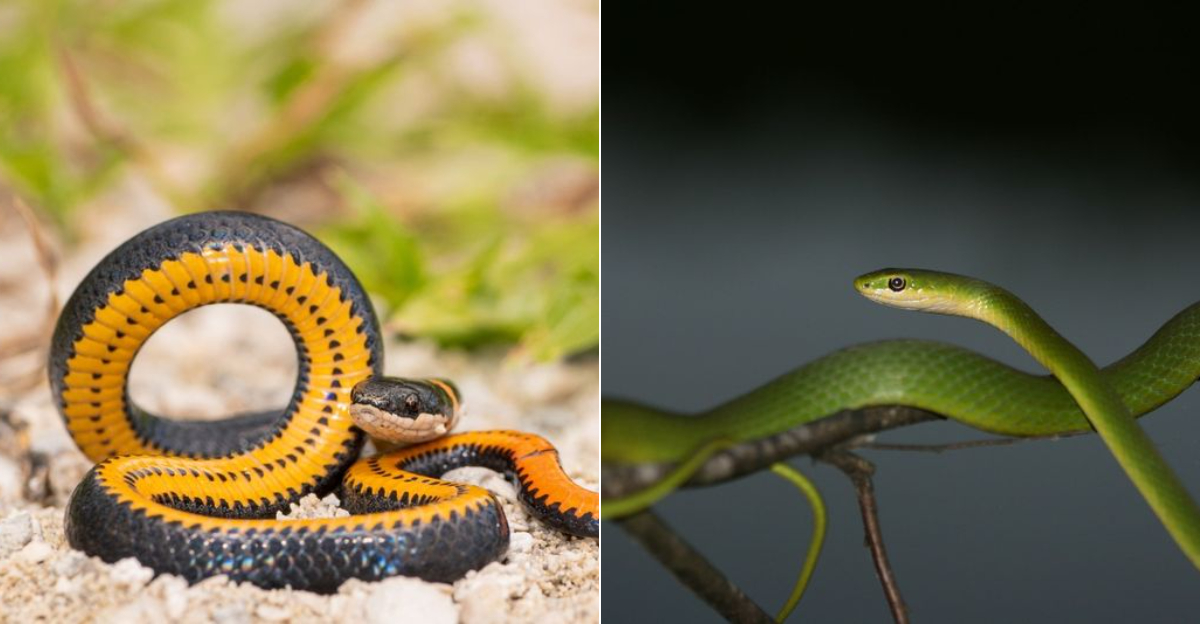Last summer, I nearly jumped out of my skin when a slender reptile slithered across my garden path.
That unexpected encounter sparked my curiosity about Pennsylvania’s serpentine residents. Our state is home to various snake species, most of which are harmless and actually beneficial for controlling rodent populations.
Understanding which snakes commonly visit our backyards can help ease fears and promote peaceful coexistence with these fascinating creatures.
1. Eastern Garter Snake: The Gardener’s Friend
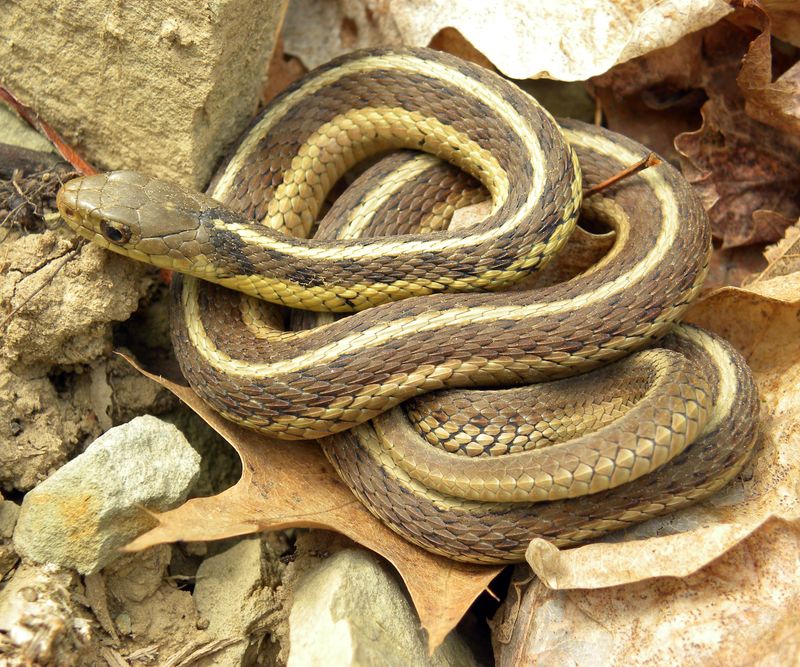
Stripes for days!
These colorful reptiles were my first snake encounter as a child, and I’ve appreciated their pest-control services ever since. Eastern Garter Snakes typically display three yellow stripes running along their dark bodies.
Despite their defensive musk when handled, these non-venomous snakes pose no real threat to humans. They feast on garden pests like slugs, earthworms, and small rodents. You’ll spot them sunbathing near garden edges or hiding under rocks and logs.
It’s safe to say they are one of Pennsylvania’s most frequently encountered backyard snakes.
2. Northern Water Snake: Riverside Resident
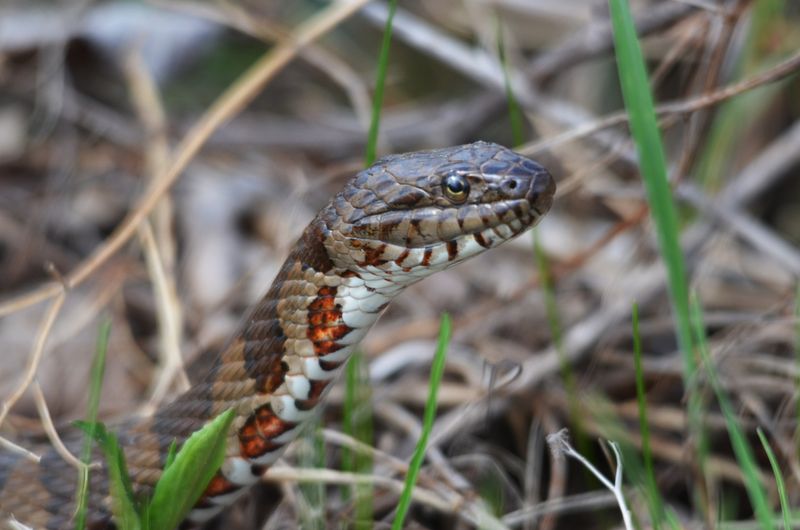
Mistaken identity causes these harmless swimmers endless trouble!
While they may look intimidating with their thick bodies and aggressive defensive behavior, these non-venomous snakes aren’t water moccasins (which don’t live in Pennsylvania).
Northern Water Snakes have variable coloration—usually brown or gray with darker blotches. They primarily hunt fish, frogs, and crayfish near streams, ponds, and lakes.
When threatened, they’ll flatten their bodies and strike repeatedly. Though their bite isn’t venomous, it can be painful and may cause bleeding.
3. Eastern Milk Snake: The Cow Barn Myth
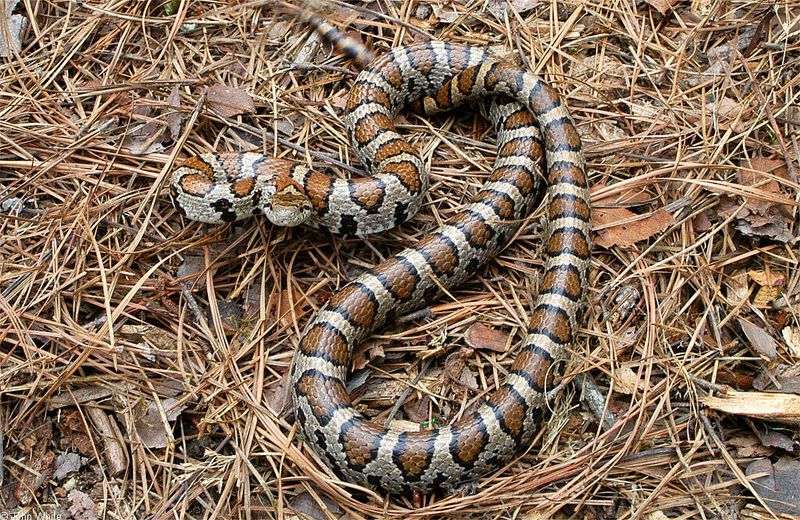
Old farmers’ tales claimed these snakes drank milk from cows—absolute nonsense!
Eastern Milk Snakes are actually docile creatures that often enter barns and outbuildings while hunting mice, which led to their unfortunate milking reputation.
Growing to 2-3 feet long, they’re constrictors that squeeze their prey rather than using venom. Milk snakes sometimes vibrate their tails against dry leaves to mimic rattlesnakes when threatened. Despite this intimidation display, they rarely bite.
4. Black Rat Snake: The Attic Explorer

Black Rat Snakes are Pennsylvania’s longest snakes. They reach an impressive 6-8 feet in length.
Excellent climbers, these constrictors scale trees, walls, and even enter attics in pursuit of rodents. Their ability to control rat and mouse populations makes them valuable allies despite their intimidating size.
Young Black Rat Snakes look completely different from adults, with patterned bodies that sometimes cause confusion with other species. Though they may hiss, vibrate their tails, or release musk when cornered, these non-venomous snakes typically avoid confrontation with humans.
5. Common Garter Snake: Suburban Survivor
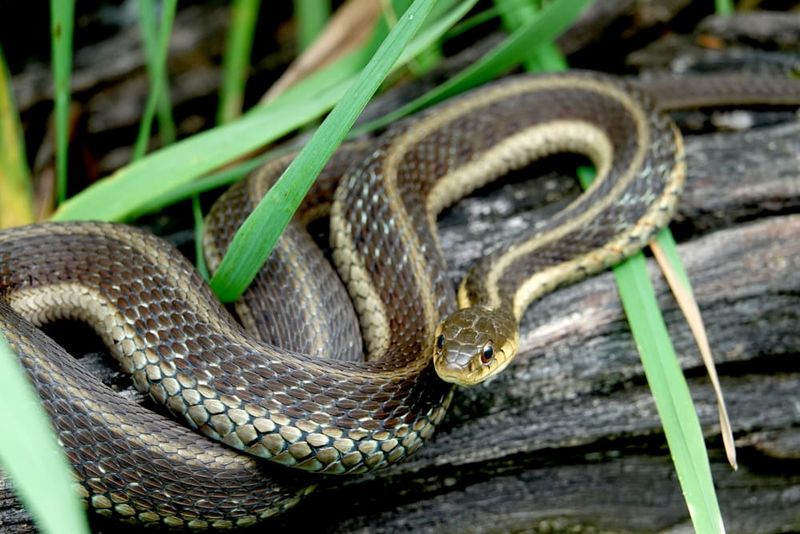
Talk about adaptable!
I’ve spotted these resilient reptiles in city parks, suburban yards, and remote woodland edges across Pennsylvania. These snakes thrive in human-altered landscapes where many other species decline.
They eat an impressive variety of prey including worms, amphibians, fish, and small rodents.
When handled, they might release a foul-smelling musk or occasionally deliver a mild bite. Females give birth to live young rather than laying eggs, sometimes producing 20-40 baby snakes at once. Impressive!
6. Eastern Copperhead: The Camouflage Master
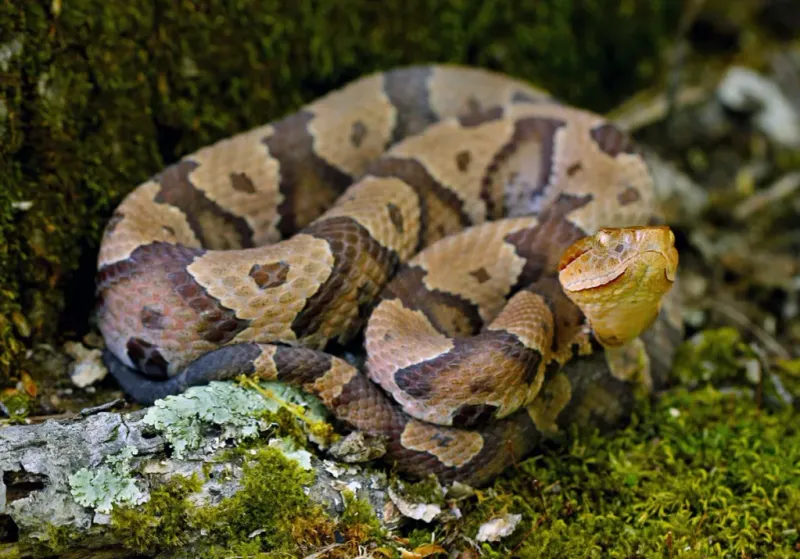
Let me be honest: I maintain a respectful distance when spotting one.
Eastern Copperheads blend perfectly with forest floor leaf litter thanks to their copper-red heads and chestnut-colored hourglass markings on a lighter body. Unlike many snakes, Copperheads often freeze rather than flee when threatened.
This behavior, combined with excellent camouflage, contributes to accidental encounters.
They’re one of Pennsylvania’s few venomous snakes, primarily found in rocky, wooded habitats in the southern and central parts of the state. Their venom is relatively mild compared to other pit vipers.
7. Timber Rattlesnake: Pennsylvania’s Icon
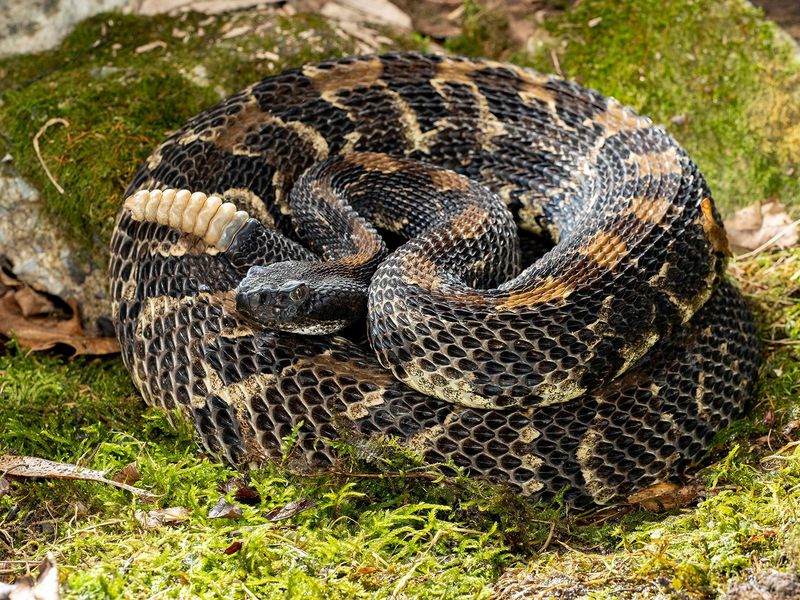
Timber Rattlesnakes are the state’s largest venomous snake.
These endangered reptiles deserve our protection despite their fearsome reputation.
They primarily inhabit remote, rocky mountainous regions, avoiding human contact whenever possible. The distinctive rattle serves as a warning system, allowing them to avoid confrontation rather than seek it.
Timbers hunt small mammals using heat-sensing pits between their eyes and nostrils. Though potentially dangerous, they’re actually shy creatures that strike only when cornered or threatened.
8. Rough Green Snake: The Living Vine
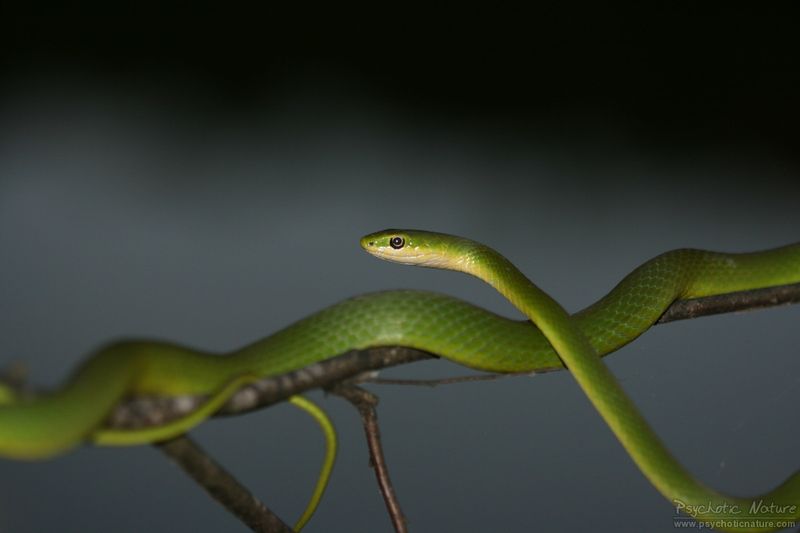
Emerald jewels of the woodland edge, if you ask me!
These slender, bright green snakes perfectly mimic vines or grass blades. So yes, they are masters of disguise despite their bold coloration.
Completely harmless to humans, they spend most of their time in shrubs and low trees hunting insects and spiders. Their scales have a slightly keeled texture, giving them their “rough” name compared to the similar smooth green snake.
Unfortunately, these beautiful reptiles don’t fare well in captivity and should be admired from a distance.
9. Dekay’s Brownsnake: The Garden Miniature
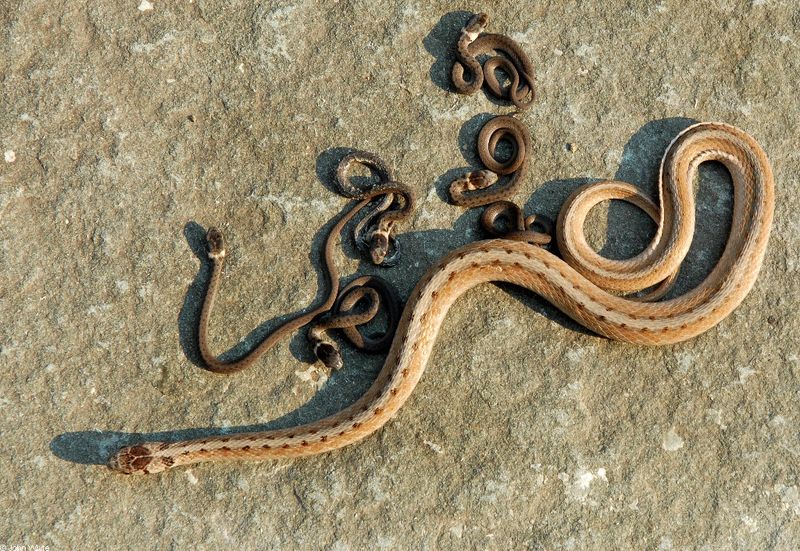
Small but mighty!
These pint-sized predators barely reach a foot long, making them the tiny tigers of my vegetable garden. Dekay’s Brownsnakes are diminutive creatures with light brown to gray bodies featuring subtle darker spots and a light stripe down their backs.
Don’t let their size fool you—these snakes are slug-destroying machines that benefit any garden.
Unfortunately, their small size makes them vulnerable to predators including larger snakes, birds, and unfortunately, domestic cats.
These common but often overlooked snakes can be found throughout Pennsylvania in moist habitats close to human development.
10. Northern Ring-Necked Snake: The Secretive Gem
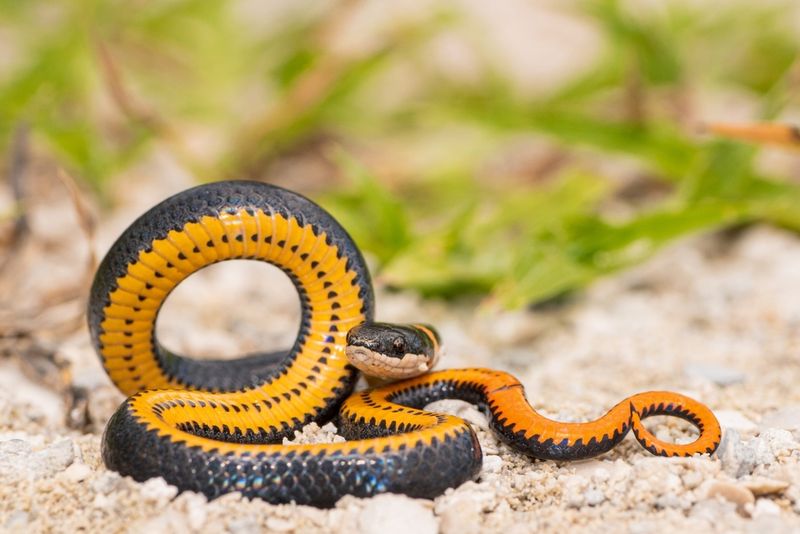
These secretive snakes spend most of their lives hidden under forest debris, rocks, or logs.
Rarely exceeding 15 inches in length, they feed primarily on earthworms, salamanders, and smaller snakes. When threatened, they have an unusual defensive display—curling their tails to reveal their bright belly color while hiding their heads.
This harmless species is widespread throughout Pennsylvania but often goes unnoticed due to its reclusive nature and nocturnal habits. Their preference for woodland habitats makes them indicators of healthy forest ecosystems.
